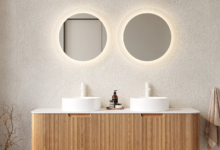Crafting Your Dream Garden: A Guide to Garden Design and Construction

Creating the perfect garden space involves more than planting flowers or laying down some grass. Garden design is a comprehensive process that brings together creativity, construction expertise, and a passion for transforming outdoor spaces into functional and beautiful environments. This article delves into the steps, benefits, and considerations involved in designing your garden, along with incorporating the key elements of garden landscaping and construction. We’ll also explore how to keep your garden looking its best long after the initial design phase.
1. Introduction: The Art of Garden Design
Garden design goes beyond aesthetics. It’s about creating a sanctuary that enhances your lifestyle, brings nature closer, and serves as a functional outdoor living space. Whether you’re interested in a garden for relaxation, entertainment, or to add value to your home, proper design is essential.
For over a decade, garden design experts have been assisting clients in shaping their ideal outdoor retreats. From initial consultations to visualizing 3D models and executing construction, these professionals combine creativity with technical skills to bring your dream garden to life. The key pillars of this process include garden landscaping, garden design, and garden construction—each playing a vital role in the journey from vision to reality.
2. Understanding Garden Landscaping
Garden landscaping is the process of modifying and enhancing the features of your outdoor space. This can involve reshaping the land, adding pathways, creating water features, planting trees and shrubs, and even installing lighting and irrigation systems.
Landscaping transforms an ordinary backyard into a work of art, combining natural elements like plants with hardscaping features such as patios, retaining walls, and walkways. Skilled landscapers work with a range of materials, from natural stone to eco-friendly products, to craft sustainable and visually appealing spaces.
One of the core aspects of landscaping is making sure that all the elements are balanced. This involves considering the scale, space, color, and purpose of your garden. For example, a family-friendly garden might prioritize open spaces for play and relaxation, while a smaller, urban garden may focus on vertical planting and efficient use of space.
3. The Role of Garden Construction
While design and landscaping focus on visualizing and planning, garden construction is the phase where ideas take physical shape. This involves skilled labor, construction expertise, and precision to bring your vision to life. Garden construction covers a wide range of activities, from laying the foundation for patios and pathways to building retaining walls, installing irrigation systems, and planting trees and shrubs.
One of the biggest advantages of professional garden construction is the attention to detail. The process ensures that every element is expertly crafted, from the smallest plants to the largest structures. This is crucial to creating a cohesive outdoor space that functions well and looks stunning.
Construction teams are usually made up of specialists in various areas, including carpenters, stonemasons, electricians, and horticulturalists. They work in harmony to ensure the project stays on schedule and within budget. Once the garden construction is complete, you’ll have a fully functional garden that complements your home and lifestyle.
4. Benefits of Professional Garden Design
Investing in professional garden design offers numerous benefits beyond just aesthetics. Let’s explore some of the key advantages:
a. Increases Property Value
A well-designed garden can significantly enhance the value of your property. It adds curb appeal and creates an inviting outdoor space that potential buyers find attractive. Even if you’re not planning to sell your home, a beautiful garden increases your enjoyment of the property.
b. Enhances Quality of Life
A thoughtfully designed garden can improve your mental well-being by providing a peaceful and natural retreat from daily stress. Studies have shown that spending time in green spaces can reduce anxiety and promote relaxation. Your garden becomes a sanctuary where you can unwind and enjoy nature.
c. Maximizes Space
Professional designers know how to make the most of any outdoor space, no matter how large or small. By carefully planning the layout and selecting the right features, they ensure that every square foot is utilized effectively. This is particularly beneficial in urban environments where space is limited.
d. Customizable to Your Preferences
With expert garden landscaping and design, you can create a garden that reflects your personality and meets your specific needs. Whether you want a low-maintenance space or a garden filled with seasonal blooms, the design process is fully customizable.
e. Long-term Sustainability
Professionally designed gardens take environmental factors into account, ensuring that the plants and materials used are sustainable and eco-friendly. By integrating irrigation systems, native plants, and energy-efficient lighting, you’ll also reduce maintenance costs and minimize the environmental impact of your garden.
5. Garden Design Process: Step-by-Step
Designing and constructing a garden is a multi-step process that ensures every detail is accounted for. Here’s a breakdown of how the garden design journey typically unfolds:
Step 1: Consultation
The first step is an initial consultation with a garden design expert. During this phase, the designer will gather information about your preferences, lifestyle, and vision for the garden. They will assess the current state of your outdoor space and discuss any specific challenges or requirements you may have.
Step 2: Concept Design
After the consultation, the designer will create an initial concept for your garden. This will include a rough layout of the garden, taking into account any features you’d like to include, such as seating areas, water features, or planting beds. You may also receive 2D or 3D visuals of the design to help you envision the final result.
Step 3: Final Design and Planning
Once you approve the concept, the designer will work on creating detailed plans. These may include CAD drawings, planting schemes, and lighting plans. The final design will also incorporate any necessary construction elements and ensure that all technical aspects, such as drainage and electrical work, are accounted for.
Step 4: Construction
With the design finalized, the garden construction phase begins. This is where skilled contractors bring your design to life by laying foundations, building structures, and installing all necessary features. Depending on the complexity of the project, this phase can take several weeks to complete.
Step 5: Planting and Finishing Touches
Once the hardscaping is complete, the final touches are added, including planting trees, shrubs, flowers, and installing lighting and irrigation systems. At this stage, the garden will begin to resemble the original design.
Read Also: Why Every Homeowner Should Invest In Key Duplication Services
6. Ongoing Garden Maintenance
Once your garden is complete, maintaining it is essential to ensure it continues to thrive and look its best. Proper aftercare involves routine tasks such as watering, pruning, weeding, and fertilizing. For those who prefer a hands-off approach, many garden design companies offer aftercare services to keep your garden in top condition year-round.
Ongoing maintenance is especially important for newly planted gardens. During the first few months, plants require extra care to ensure they take root and establish themselves in their new environment. Professional aftercare can prevent common issues like overgrowth, pest infestations, and poor plant health.
7. Conclusion: The Value of Expert Garden Design
Investing in expert garden design ensures that your outdoor space is both beautiful and functional. From initial planning to garden construction and maintenance, each step is carefully crafted to meet your needs and create a space you can enjoy for years to come. Whether you’re looking for a complete garden makeover or just a few enhancements, professional design services make the process stress-free and guarantee a stunning result.
With the right team and plan in place, your garden can become a true extension of your home—an outdoor haven that brings joy, relaxation, and increased value to your property. Whether through garden landscaping, garden design, or garden construction, transforming your space has never been easier.







